Destination Dining at This Famous Willamette Valley Winery
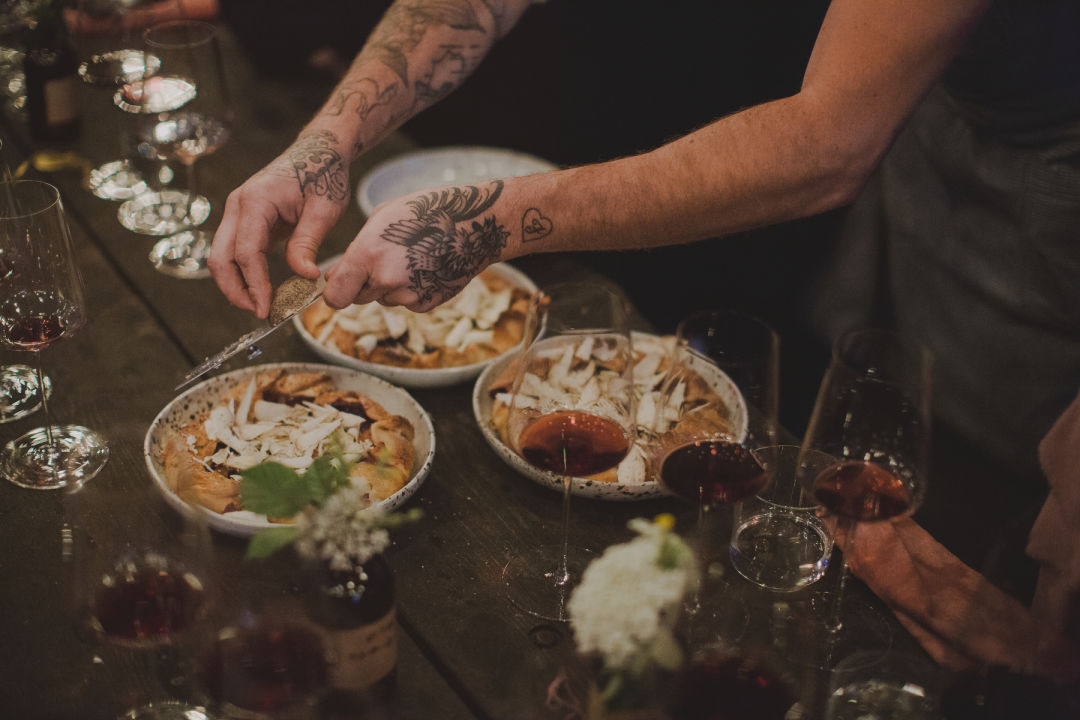
Food is a major part of the scene at Antica Terra—think small plates paired with battalions of wine and elaborate multicourse lunches.
The life of any winery is ruled by seasons, and for Antica Terra—the cult Oregon winery cofounded almost two decades ago by winemaker Maggie Harrison—this is a season of abundant growth.
Harrison, a former assistant winemaker at California’s iconic Sine Qua Non, operates what’s perhaps the most famous wine label in Oregon today. Her bottles are name-checked by LeBron. Air Mail, the swish newsletter cofounded by former Vanity Fair editor in chief Graydon Carter, recommends a visit. In the first paragraph of an extensive New York Times Magazine profile, writer Alex Halberstadt calls her “a genius.” (The piece was shortlisted for a James Beard Award.)
For the last decade, a visit to Antica Terra meant sitting in a former hazelnut processing factory off an industrial park in Dundee, the little Oregon hamlet 20 minutes northwest of McMinnville. The space felt cold, haunted, and magical, and in it Harrison pursued a contrastingly maximalist approach to wine tasting, offering her own wine labels next to the best of the best from Burgundy, Champagne, and Piedmont. Chef Timothy Wastell, formerly of celebrated, now-closed Portland restaurants Old Salt Marketplace and DOC, has overseen Antica Terra’s food program since 2017. Food is a major part of the scene here—think small plates paired with battalions of wine and elaborate multicourse lunches.
In 2023, a family up the hill retired, bequeathing 148 acres to Harrison. In the time since, Harrison and her team have worked diligently to install Antica Terra’s new home on the property, including a showcase building for tastings and lunches that they’re calling the Barrel Hall. They opened to visitors in July 2024, welcoming guests to the Barrel Hall as well as launching a series of elaborate outdoor dinners on a 200-foot-long, site-poured concrete table beneath dappled white oaks: the “Table in the Trees.”
Part of the hook around Harrison is that she does things differently. She blends multiple vintages, varietals, and vineyards obsessively, like conducting an orchestra or weaving plotlines through a novel, and resulting bottles stray from the single-vineyard wines and 100 percent pinots that dominated the Willamette Valley for decades. Harrison works with both Oregon and California fruit across three different labels (Antica Terra, Lillian, and the Glories), and plays with the conceptual boundaries of wine norms. Instead of technical sheets on her website detailing when and where fruit was picked, you instead find an emotional treatise on the scientific-slash-phenomenological theory of resonance as defined by nineteenth-century German physicist Hermann Helmholtz.

An oculus of an entryway welcomes visitors to Antica Terra’s new property.
You can do smaller tastings at Antica Terra, but you’ve boarded the spaceship—walked through the West of West–designed Lynchian oculus of an entryway—and so you might as well give in. Guests do not simply, you know, taste wine here; they go on a little journey, accompanied by unusually thoughtful food pairings, through which Harrison’s bottles are interwoven with splashes of grower champagne, GG Riesling, and serious Barolo. What you want is what’s called A Very Nice Lunch: a succession of wines and small plates and more wines and entrées and dessert, first offered at the old space back in Dundee, now with an expanded approach in the new, much-larger space.
Everything here has a kind of mannered rusticity: sheep fluff cushions on the benches, Japanese-style paper lights, the unseen ORCA Design stereo system playing subdued tonal drones and then live jazz from the 1950s. It evokes dinner at a fine dining restaurant in San Francisco or Chicago, only this is lunch, and you are in the Willamette Valley. It’s all a little woo, a little weird, if you’re open to that sort of thing. The vibey, sorcerous environment at the Barrel Hall recalls the old spooky place back in town, but now there’s an elegance flickering in every corner, a great room ringed by barrels and lit by long, drippy candles. Call it witchy luxury.
A series of small rooms wreath the hall, each with its own Oregon white oak table carved from timber sourced from the property. All around are racks of wine, and here I must digress briefly, because they are not just merely “racks of wine” but rather racks stocked with unbelievably rare and difficult-to-source wines over which hobbyists make a very great fuss indeed. They come from the likes of Cesare Bussolo and Jacques Selosse and Weingut Keller and are sold by Antica Terra direct to customers under the auspices of something called Yes Society. Casual visitors will care more about the lunch to come, but for wine geeks the presence of these bottles is incredible to the point of distraction. (It me.)
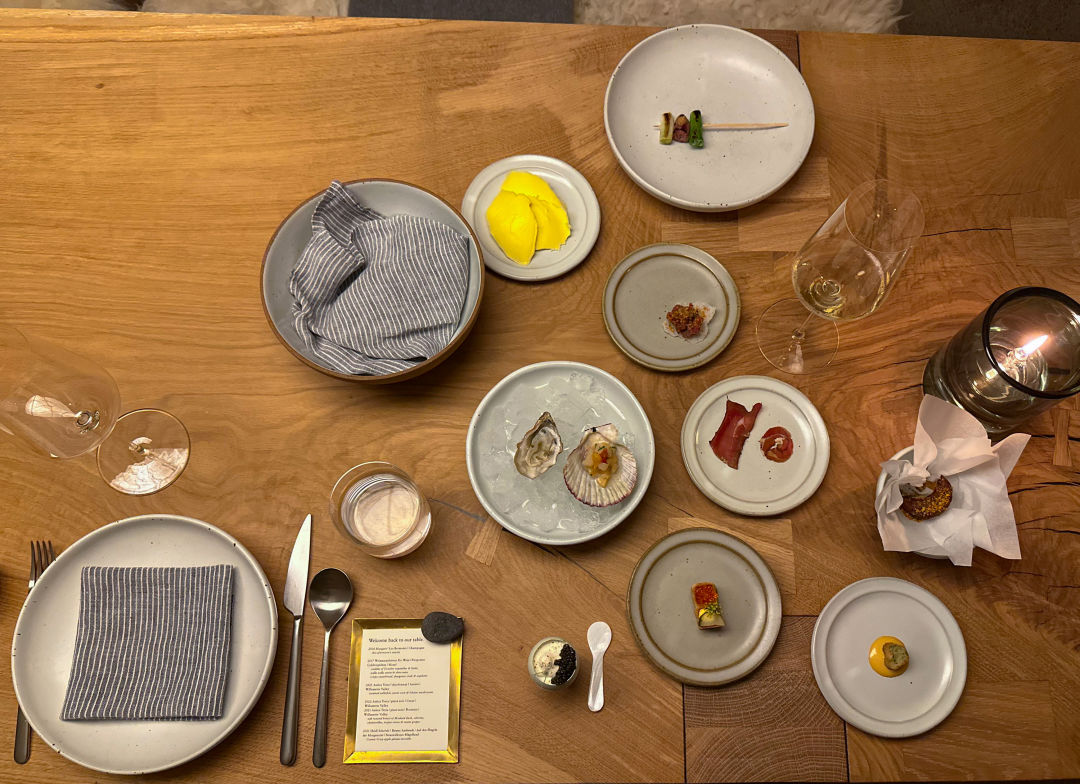
A processional of tiny snacks begins what Antica Terra calls A Very Nice Lunch.
What comes first is a processional of tiny snacks that reminds me of Italian antipasto, like how they serve it at Cibrèo in Florence, or Russian zakuski, like how they serve it at Kachka—your entire table is covered with little bites, from raw bar to goat charcuterie (“We broke down a whole goat,” the server tells me) to a delicate waffle segment filled with uni, all of it meant to cruise alongside Grand Cru champagne. A bit of skewered chicken heart with green onions over Japanese hot mustard clears the sinuses; dill bread rolls taste like the rain falling softly outside.
Next, vegetables. Wastell’s elaborate crudités set is a study in textures: waxy red cabbage, crunchy purple cauliflower, soft tart strawberries, cool crispy cucumber, delicate raspberries, a hidden spike of raw fennel, all of it made gently more complex with a lash of miso onion dip. When was the last time your favorite dish was the raw vegetable platter? I’m not sure I’ve had better.
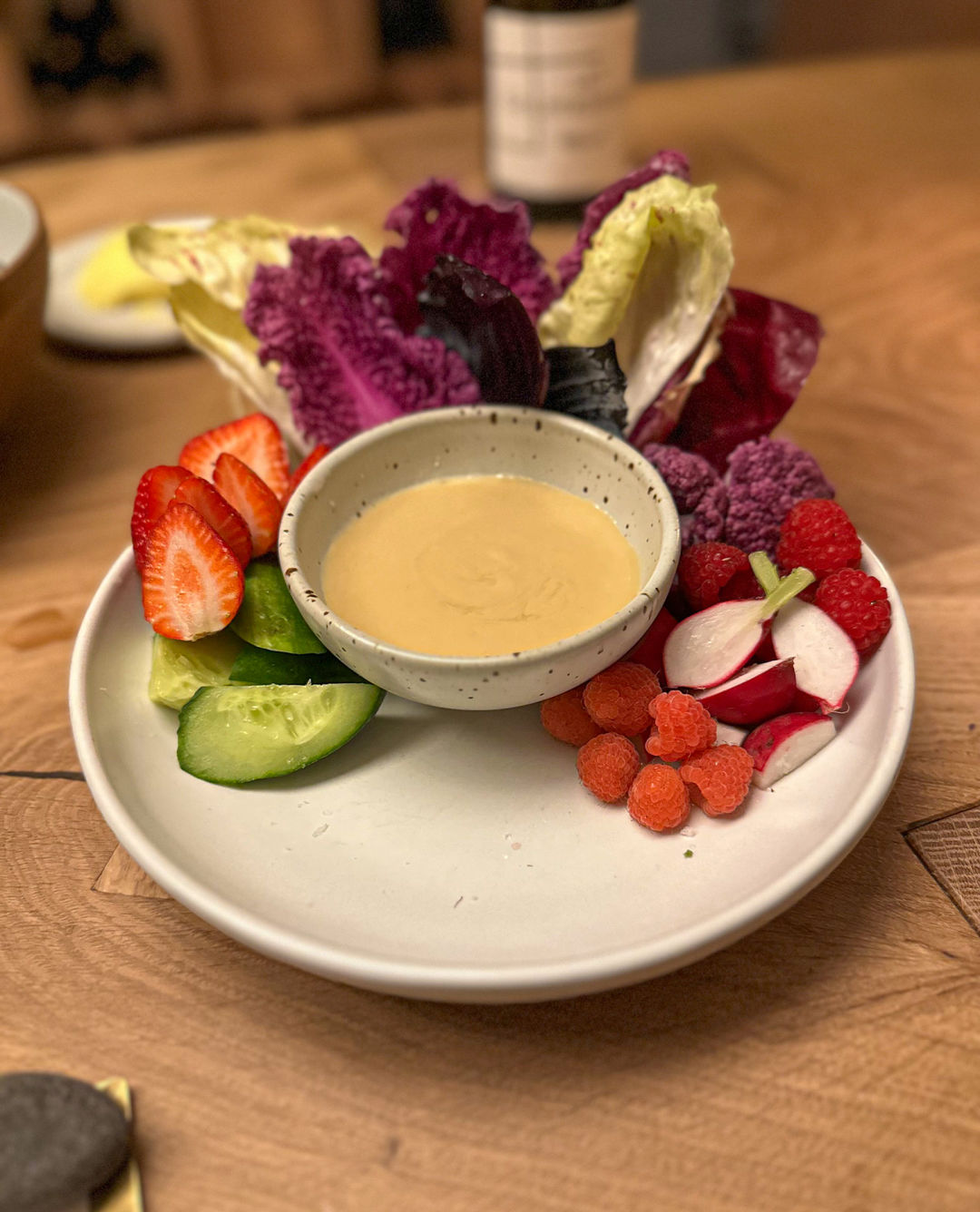
Chef Timothy Wastell’s crudités set is a study in textures.
You taste and sip and ponder a dozen or so things before any of Antica Terra’s own bottles are poured, a process that cannot help but flatter the wines, like being invited to join a very chic high school table in the great vinous lunchroom in the sky. By creating an extraordinary context around her wines, with layers of flattering company, you better understand just what Harrison is aiming for. Perhaps your defenses are lowered, too.
Her wines are good, though—in some cases, very good—and the whole thing really does feel like art. Antica Terra’s Aurata Chardonnay leans into the weight and elegance sometimes evoked by the grape, and swims happily alongside steamed Oregon sablefish with lobster mushrooms and a sweet corn sauce. I’m still sipping on it when the best dish of the day arrives: veal sweetbreads over a little disc of raw crab meat, all atop a velvety espelette hollandaise sauce and a ring of flowers and herbs. It’s almost like a boffo Benedict, but the subtle red pepper in the hollandaise and the herby complexity of the floral array give the whole thing class and lift. If you served this in the city, people would be jumping up and down screaming and filming themselves consuming it on Instagram. Here in the valley, it’s allowed to simply exist, and wow.

A lot of wineries orient themselves with great big views and open skies. Not here.
By the time I arrive at the red wines, anticipation has been well and truly built. I’m poured a glass each of the winery’s Ceras pinot noir, featherweight and young to the point of still finding itself (we’ve all been there), and its Botanica pinot noir, which is outstanding, offering a kind of summer sunshine reductive note in a glass, like drinking cherry juice on a hot playground blacktop. The wines are sold direct from the winery at $175 each; you cannot buy them at retail stores, and you’ll pay twice that at select restaurants.
These wines are served alongside a duck ensemble, mounted with the winery’s own table grapes and grilled tropea onion, next to a perfect, layered rectangle of creamy crunchy celeriac, which unfolds in a series of ribbony bites like a very good croissant. Serious kitchen technique is happening here, but sadly our friend the duck had flown in from Sonoma for the afternoon, which is really my only knock on lunch—a missed opportunity to source local protein.
There’s dessert—a slice of Cosmic Crisp apple cake—and sweet wine from Germany, and throughout lunch there’s the chance to add four-ounce pours from winemakers like Bernard Bonin, Olivier Bernstein, Dominus Estate, and Coche-Dury (more wine geek candy), but at some point it dawns on me that as escapist and transporting as this has all been, I am still in the valley, and the grounds outside beckon. A lot of wineries orient themselves with great big views and open skies. Not here: The Barrel Hall is self-contained, with no exterior-facing windows to speak of, bathed entirely in its own ambience. It’s as if time stops working in here, which is fun, if perhaps a touch unnerving, and by the end I find myself yearning for a world beyond the barrels and bottles.
And so, back through the trippy oculus and into the outside. Bright sun, cool clouds, fresh air, soft rain. The grounds are Edenic but subtly designed: walkways, ponds, a little series of steps. A hawk loops high, songbirds flutter, and a horned ram wanders the gardens. (A naughty escapee, I learn.) A collie dog runs after me along a shared fence. The Eola-Amity Hills glow green and orange and gray and blue, seeming to stretch on forever all around me, 360 degrees of five senses working overtime. What’s out here rhymes, in a way, with what I experienced inside—the winemaker, the architects, and the chef exerting their influence and craft, but never truly in control of it all, because none of us is. There’s always something bigger pushing and pulling. It’s like a metaphor for wine itself.
Share this content:
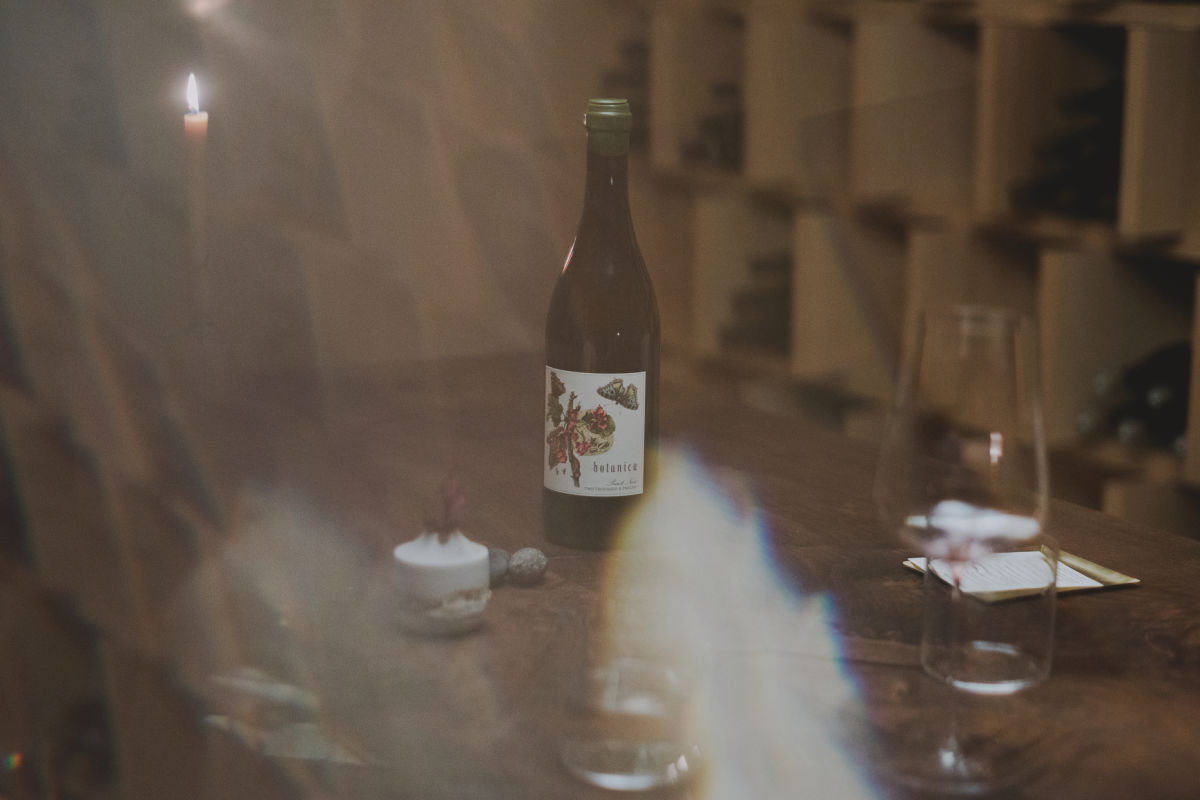

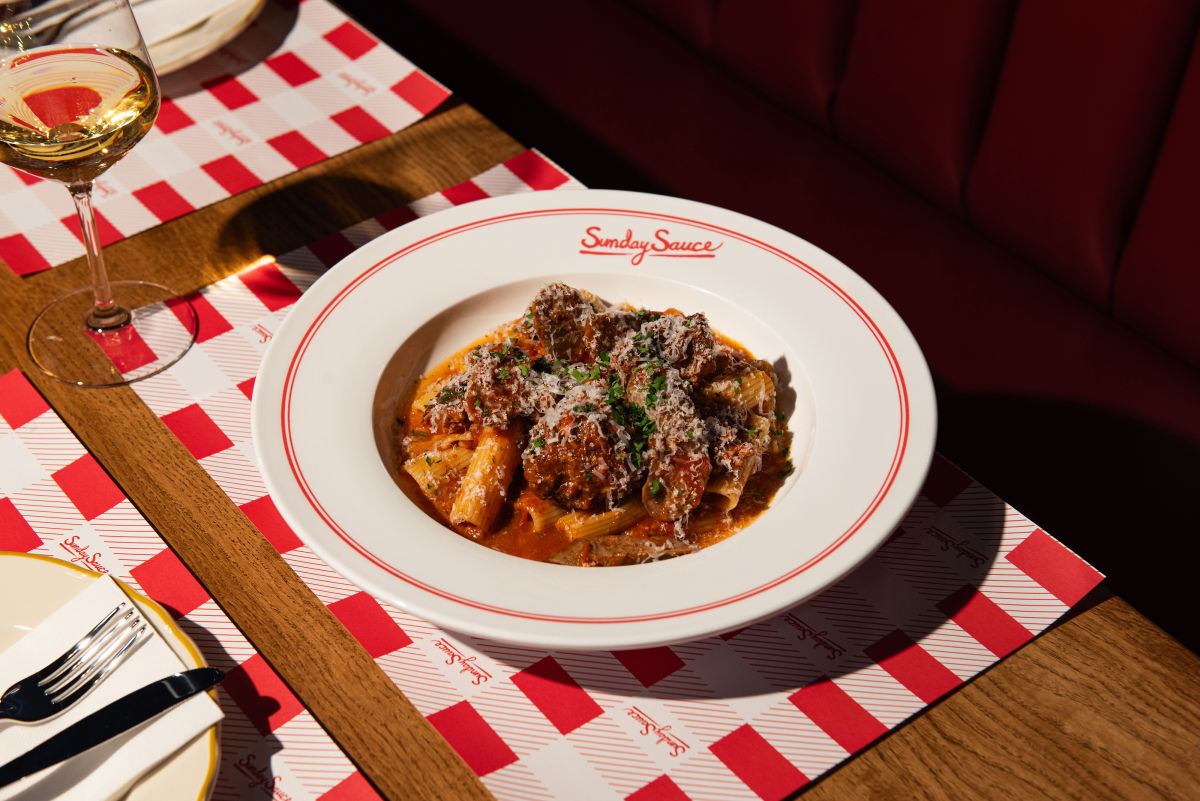
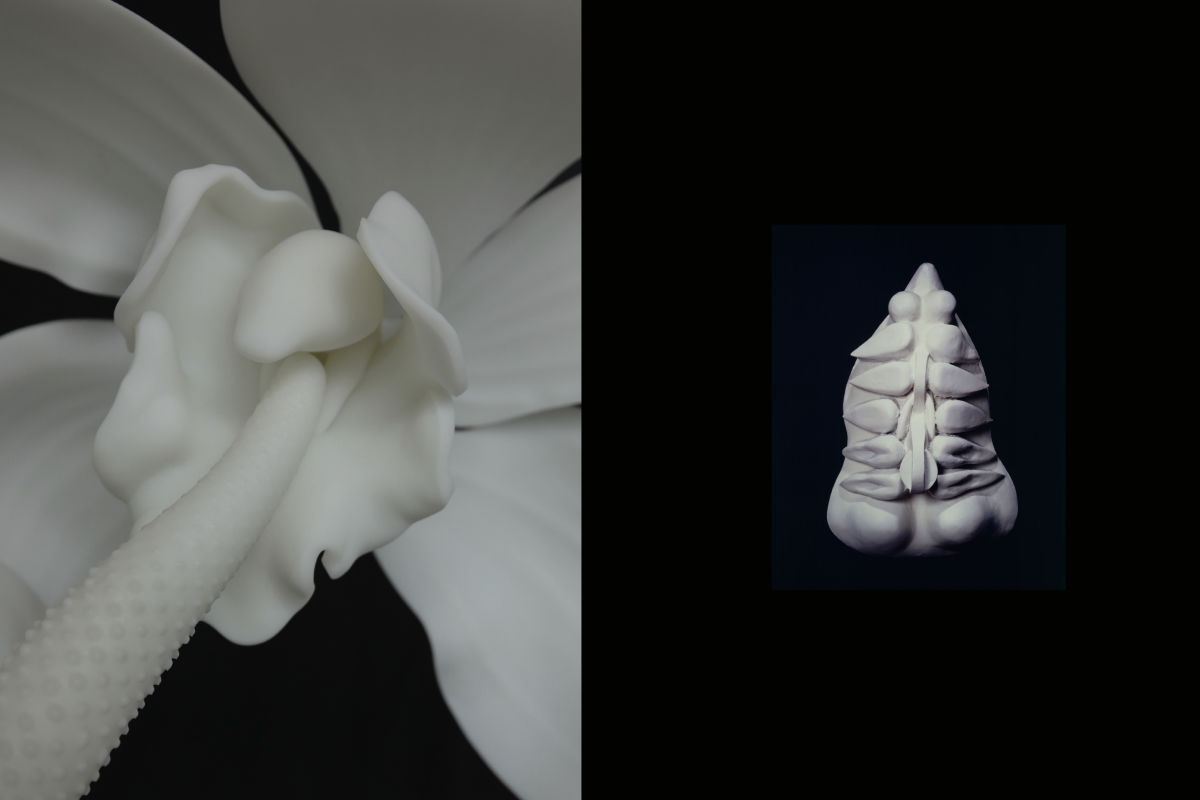
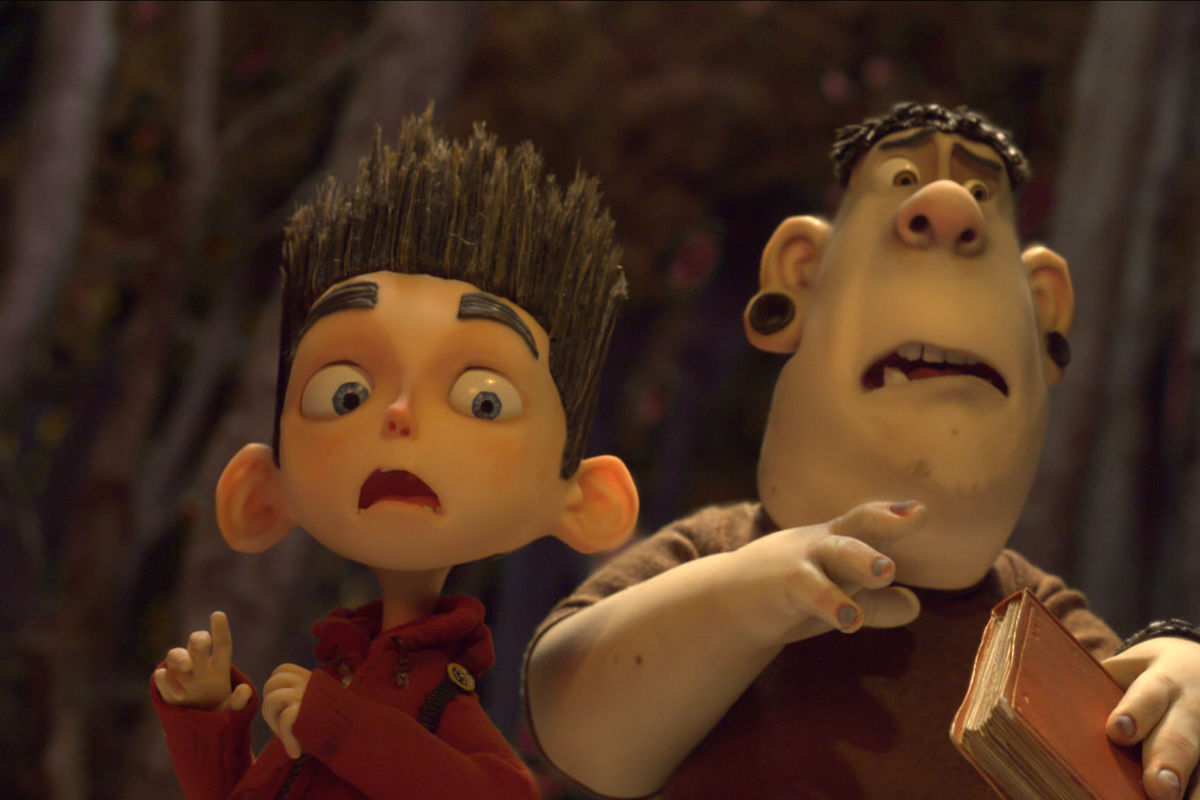
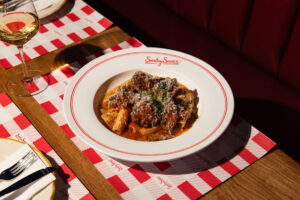
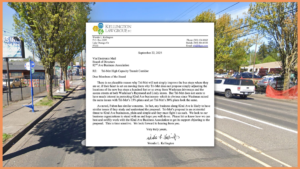

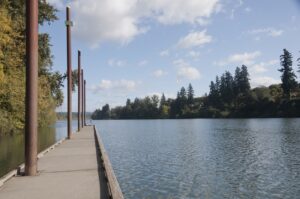
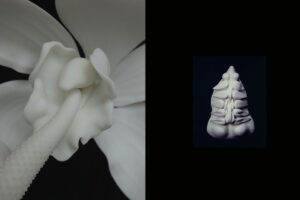





Post Comment